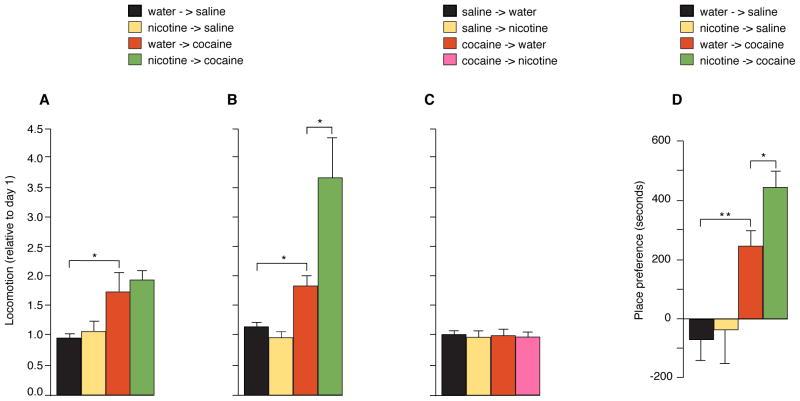Fig. 1.
Nicotine priming enhances cocaine-induced behavioral endpoints, sensitization and conditioned place preference (CPP). For sensitization, we treated mice with nicotine (50 μg/ml) in the drinking water either for 24 hours (Fig. 1A) or 7 days (Fig. 1B). For the subsequent 4 days, the mice were treated with a single cocaine injection per day (20 mg/kg), with continued exposure to nicotine in the drinking water (n = 10–15 per group). Data expressed as total distance traveled on day 4 compared with day 1. (A) Lack of effect of 24 hours nicotine treatment on cocaine-induced locomotion. (B) Effect of 7 days of nicotine treatment on cocaine-induced locomotion. (C) Lack of effect of 7 days of cocaine treatment on nicotine-induced locomotion. (D) Effect of nicotine pretreatment on CPP. After 7 days of exposure to nicotine, mice were conditioned to either side of the place preference chamber with cocaine or saline. Preference scores were calculated subtracting the time spent in the cocaine-paired side after conditioning to the time before conditioning (n = 8 per group). Data represent mean ± SEM.

